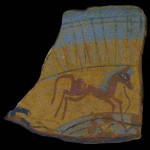
The new Ancient Egypt and Sudan galleries at the Ashmolean, Oxford
The Ashmolean Museum, a neoclassical edifice built by Sir Charles Cockerel in 1845, has invested both money and creativity in a refurbishment of the entire museum and art gallery. The effect, bright and open, a sympathetic blending of old architecture and new design, is inviting and attractive. The Ancient Egypt and Sudan galleries were the last to receive the modernization treatment. Costing over £5 million and designed by Richard Mather, they were re-opened in November 2011. [more…]
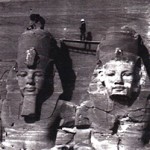
Review: Lost Nubia. A Centennial Exhibit of Photographs from the 1905-1907 Egyptian Expedition of the University of Cairo
This book, produced to complement the exhibition of the same name, is essentially a catalogue of the photographs. Preceded by a three and a half page Introduction and followed by a one and a half page Epilogue and a map of the Nile between the Sixth Cataract and the sea, the main body of the book presents some fabulous photos in black and white from the exhibition, accompanied with detailed explanations. [more…]
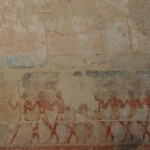
TV Review: The Pharaoh Who Conquered the Sea
The Pharaoh Who Conquered the Sea follows the activities of Cheryl Ward who decided that the only way to determine whether or not Hatshepsut’s expedition to Punt in the New Kingdom was a technically viable proposition was to recreate one of the ships shown on the walls at her funerary temple and test it on the Red Sea. [more…]
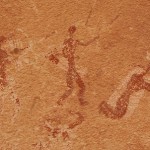
Life on Mars: The Gilf Kebir, Zerzura and the Cave of Swimmers
Rising 300m above the desert floor, and covering an area the size of Switzerland, the Gilf Kebir is one of the most arid and inhospitable places in the Sahara. Located in the Egyptian desert, near the Libyan border a 100km north of Sudan, it shares a latitude with Abu Simbel. For over 100,000 years the Gilf Kebir was home to generations of hunters, followed by two thousand years of use by nomadic herders. It was only re-discovered in 1926, and since then it has been the subject of numerous expeditions for exploration, archaeological and geological investigation and, more recently, tourism. Very remote and arid it remained an almost pristine landscape until recent decades, perfect for field research. Even NASA researchers have studied the Gilf Kebir to evaluate conditions that might prevail on Mars. [more…]
Documentary Review: The Man Who Discovered Egypt
Review by Andrea Byrnes. In Magazine Articles on Egyptological. april 3rd 2012. The Man Who Discovered Egypt 28th March 2012, BBC4 Cast: Presenter – Chris Naunton Director – Deborah Perkin Executive Producer – Christina Macaulay Producer – Deborah Perkin Introduction The man in ‘The Man Who Discovered Egypt’ was Sir William Flinders Petrie, […] [more…]
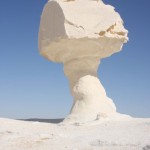
Book Review: The Oases. Egypt Pocket Guide.
The Oases is one in an excellent range of pocket guides to various parts and periods of Egypt. They are all characterized by beautiful photographs, excellent maps, site plans and illustrations and informative text that guides the traveler through the temporal, geographical and cultural space under discussion. [more…]
Edition - March, 2012
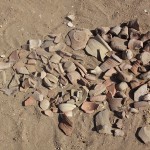
Documentary Overview: The Vanished Capital of the Pharaoh
By Andrea Byrnes, published on In Brief, Egyptological, 18th March 2012 The Vanished Capital of the Pharaoh (In the series ‘Lost Cities of the Ancients’) BBC4, March 15th 2012. 2000-2100. Narrator, Mark Halliley, Series Producer, Dan Clifton Writer, Mark Everest Featuring Manfred Bietak, Edgar Pusch, Aidan Dodson Introduction Figure 1. Map of the […] [more…]
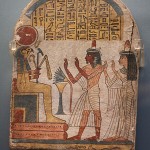
A Context for Nehmes-Bastet (KV64): A Birds Eye View of the Early Third Intermediate Period – Part 1
In January 2012, thanks to the discovery of a new tomb in the Valley of the Kings, named KV64, the 22nd Dynasty was catapulted into the spotlight. At the moment, apart from a couple of tantalising photographs and a video released by the University of Basel (Switzerland) all we know is that the mummified woman was called Nehmes-Bastet; she was a chantress; and her father was a priest at the Temple of Karnak [more…]
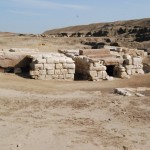
A Context for Nehmes-Bastet (KV64): A Birds Eye View of the Early Third Intermediate Period – Part 2
In Part 1 the political background to and development of the Third Intermediate Period was described, emphasizing the way in which power became divided, both within the Delta and between the Delta and the south, where the Theban high priests became increasingly powerful. Part 2 looks at the blending of Libyan and Egyptian traditions, with new ideas expressed in funerary practices and in the role of religious institutions. [more…]
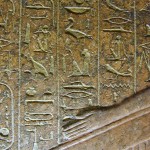
Lecture Review: The re-excavation of the tomb of Horemheb in the Valley of the Kings by Professor Geoffrey Martin
Professor Martin is currently engaged in assembling the results of his work re-excavating the tomb of Horemheb for publication, and it became clear from his lecture that this work is long overdue and will be welcomed by the academic community. Martin described re-excavation as a new type of archaeology, geared specifically to finding information that previous excavators may have missed. He cited Kemp’s work at Amarna as an example of this. [more…]
 By
By